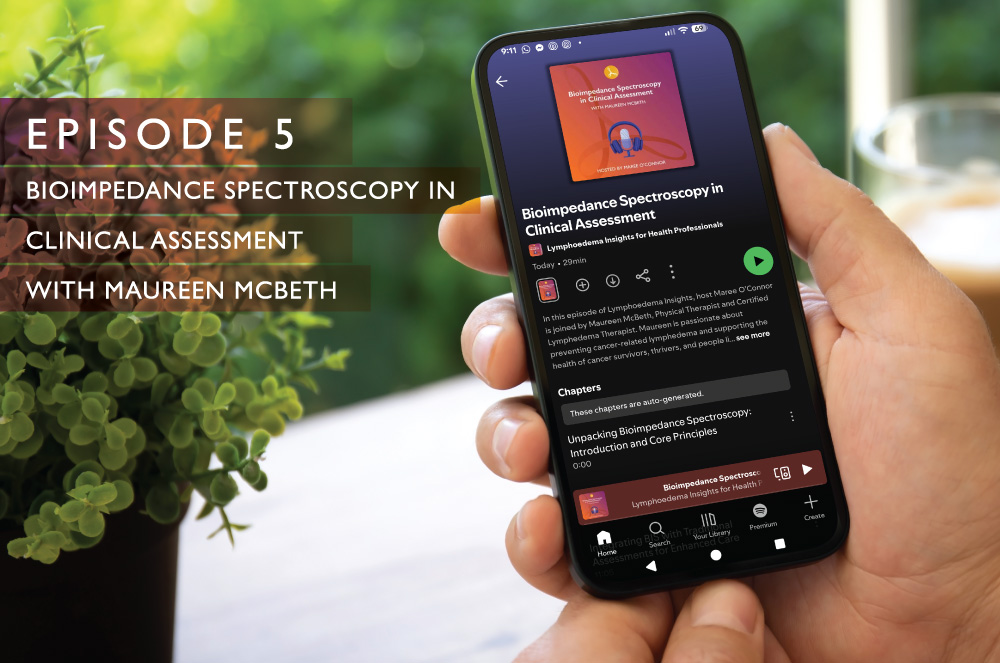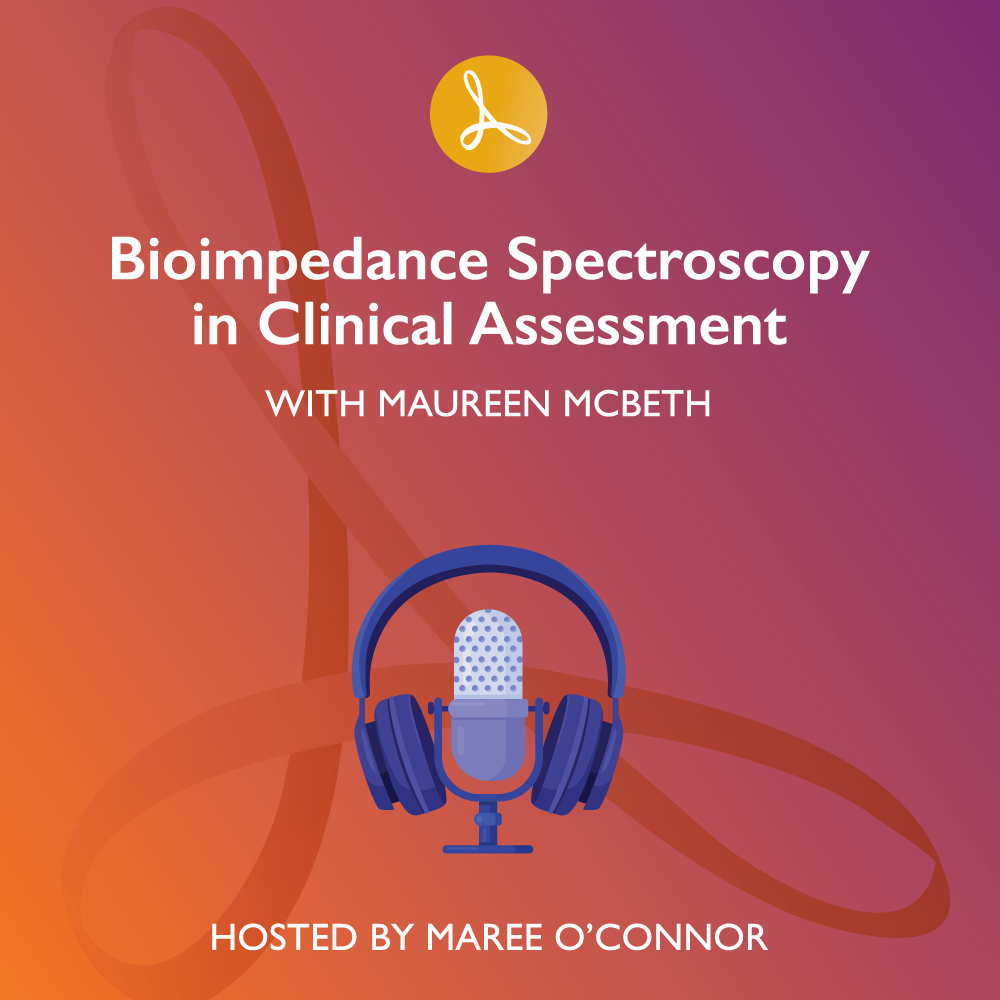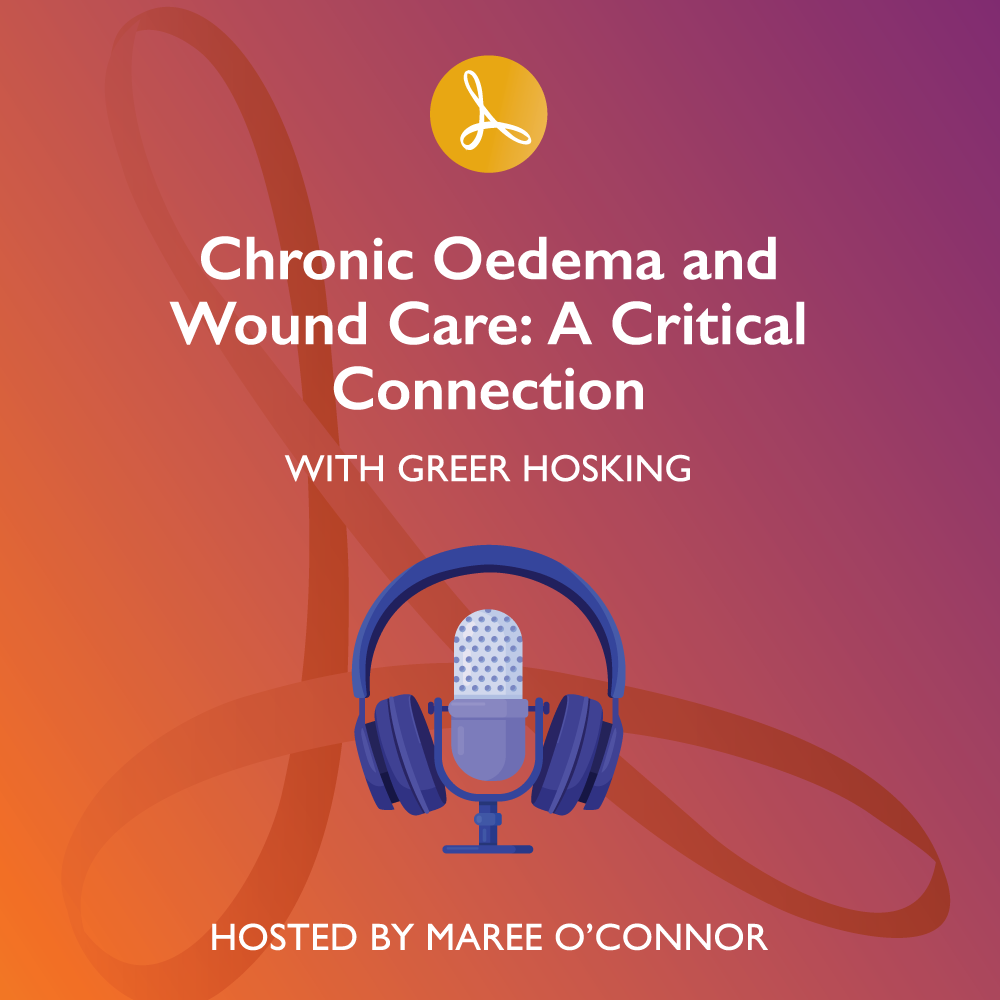Bioimpedance Spectroscopy in Clinical Assessment

In this episode of Lymphoedema Insights, host Maree O’Connor is joined by Maureen McBeth, Physical Therapist and Certified Lymphedema Therapist. Maureen is passionate about preventing cancer-related lymphedema and supporting the health of cancer survivors, thrivers, and people living with chronic swelling disorders. Together, they explore the clinical applications of Bioimpedance Spectroscopy (BIS), a technology that measures fluid and tissue composition, tracks changes over time, and provides actionable insights for patient care. From enhancing traditional assessments to motivating patients with measurable feedback, this conversation uncovers the benefits, limitations, and future potential of BIS in healthcare, offering practical ideas for clinicians and anyone interested in improving health outcomes.
🎧 Listen to Episode 5
About our guest speaker: Maureen McBeth
Maureen McBeth is a licensed physical therapist and certified lymphedema therapist with over 25 years of experience in oncology rehabilitation, clinical education, and patient advocacy. As Senior Medical Affairs Liaison at ImpediMed, she supports the integration of bioimpedance spectroscopy (BIS) into clinical practice for early lymphoedema detection and comprehensive body composition analysis. A nationally recognised educator, Maureen has trained clinicians across the U.S. and internationally, translating emerging evidence into practical clinical strategies. She regularly presents at major conferences and has published in peer-reviewed journals and textbooks. Maureen’s work reflects a long-standing commitment to improving patient outcomes through evidence-based, patient-centred use of BIS and other technologies in cancer rehabilitation and lymphatic health.
Key points discussed
Introduction to BIS (Bioimpedance Spectroscopy):
- Measures fluid and tissue composition using electrical frequencies.
- Differentiates between fluid, cells, and cellular membranes.
- Useful for assessing fluid levels, extracellular fluid, intracellular fluid, and total body water.
Applications of BIS:
- Screening and managing lymphedema and chronic edema.
- Body composition analysis, including muscle mass and fat mass.
- Monitoring hydration and recovery in athletes.
- Assessing systemic diseases like heart failure and fluid overload.
- Identifying malnutrition during medical crises.
- Tracking fluid changes in aged care and obesity management.
Benefits of BIS:
- Provides accurate and specific fluid measurements.
- Helps track and trend changes over time for better health management.
- Offers positive feedback for patients, motivating them to maintain healthy habits.
- Can identify critical fluid imbalances requiring immediate medical intervention.
Limitations of BIS:
- Not suitable for patients with implantable devices (e.g., pacemakers).
- Cannot be used for individuals with amputations or severe contractures.
- Calloused feet or dry skin may affect conductivity.
- Metal implants can cause errors in measurements.
- Movement or tremors can impact results.
- Extremely fluid-dysregulated patients may yield inaccurate tissue measurements.
Future Potential of BIS:
- Integration into routine health checks and emergency departments.
- Use in cardiac care, aged care, sports, and rural healthcare settings.
- Potential for remote monitoring and community-based health centers.
- Accessibility for non-health professionals to perform tests remotely.
Importance of Combining Tools:
- BIS complements traditional methods like tape measures and functional assessments.
- Provides a comprehensive view of patient health when used alongside other tools.
Empowering Patients:
- Helps patients understand their body composition and fluid levels.
- Encourages positive health behaviors and provides motivation through measurable progress.
Support for Health Professionals:
- Enhances clinical assessment and management of lymphedema and chronic edema.
- Offers evidence-based tools to improve patient care and outcomes.
Closing Remarks:
- BIS is a valuable tool for improving patient care and health monitoring.
- The technology has the potential to expand into various healthcare sectors and improve accessibility.
Recommendations for clinical practice
Here are the recommendations for clinical practice mentioned in the discussion:
- Combine BIS with other tools: Use BIS alongside traditional methods like tape measures, functional assessments, and visual observations for a comprehensive evaluation.
- Understand the limitations of BIS: Be aware of its restrictions, such as in patients with implantable devices, amputations, or severe fluid dysregulation.
- Educate patients: Provide clear explanations of BIS results to help patients understand their health and motivate them to make positive changes.
- Track and trend over time: Use BIS to monitor fluid and body composition changes over time rather than relying on single measurements.
- Standardize measurement conditions: Ensure consistent measurement conditions, such as time of day, hydration, and activity levels, for accurate results.
- Use BIS for early detection: Leverage BIS to identify critical fluid imbalances that may require immediate medical intervention.
- Incorporate BIS into routine health checks: Consider using BIS as a standard health check tool in clinical settings, aged care, and emergency departments.
- Expand access to BIS: Advocate for BIS devices in rural and community health centers to improve accessibility and enable remote monitoring.
- Utilize BIS for specific populations: Apply BIS for athletes, aged care patients, and individuals with systemic diseases to address hydration, malnutrition, and fluid imbalance.
- Educate clinicians on BIS: Train healthcare professionals on the proper use and interpretation of BIS data to maximize its clinical utility.
Catch up
🎧 Listen to Episode 1 – 4 are now available on Spotify and Apple Podcasts
Sponsorship:
This episode of Lymphoedema Insights is proudly supported by Regional Health Care Group, an Australian-owned company with more than 40 years of experience in medical distribution. Regional Health Care Group supplies trusted medical consumables, contrast media, and quality capital equipment to public and private healthcare providers across Australia. With a strong commitment to clinical excellence and service, they partner with healthcare professionals to support improved patient care and outcomes.
Learn more at rhcg.com.au
Note: Sponsorship does not imply endorsement, and all educational content is developed independently to ensure it remains evidence-based and unbiased.









